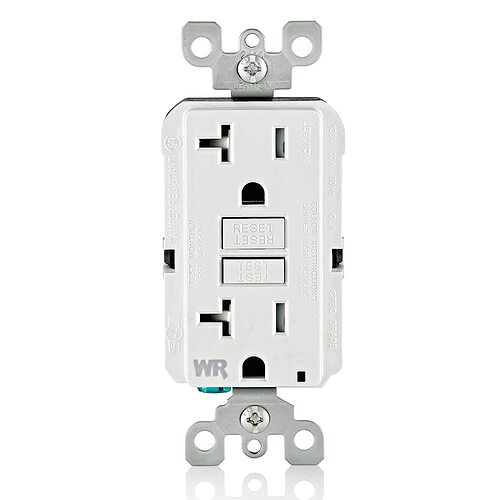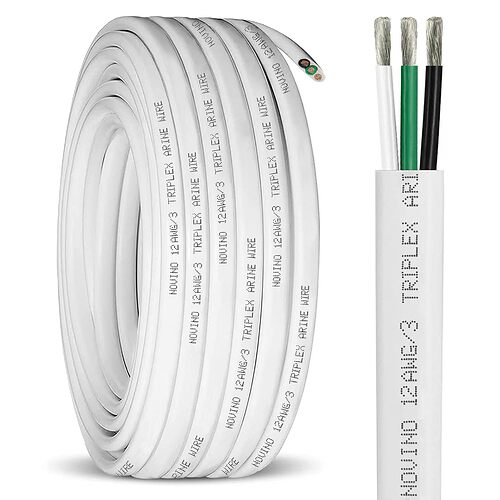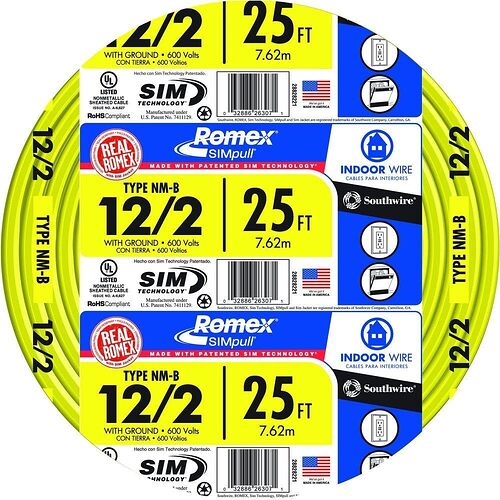I’ve just ordered a Shakeoko 5 4x4 and I’m wondering if there is any issue running a 220v service to the workbench and separating the hot legs for two 110 outlets to create two separate circuits for the control and router. It would allow me to utilize some of the 220v Outlets I have in my shop for other tools. Has anyone tried this? See any issues.?
A 220v outlet is just two 120v outlets 180 degrees out of phase from each other. In your electrical panel the 120v circuits are made from 1/2 of a 220volt input.
So it is very possible. The problem I see is the 220v outlets usually use very thick wire and a 20, 30, 50 amp breaker. So to use that 220v outlet as two 120 v outlets is technically possible the problem is if anything goes wrong you will likely never pop the circuit breaker. Additionally in a garage/shop environment it is required by electric code to have Ground Fault Interrupter Circuits (GFCI).
So to go further down the rabbit hole is you would likely be out of code for most cities and towns. If you ever had a serious problem that caused a fire and the insurance company found out what you did it likely not cover your loss.
So it is technically possible I personally would not do it for the above reasons. Just run a new branch circuit with #14 wire for a 15 AMP circuit or #12 Wire for a 20 AMP 120vac outlet. You can put in a GFCI breaker or the first outlet in the branch a GFCI outlet.
Some people have had problems with a GFCI outlet popping off when connected to a VFD like the C3D Spindle. Others have had no problem. I have a Jet 1221 VS Lathe that if hooked up to a GFCI outlet and I change speed it pops the GFCI outlet. Additionally I have a Jet1642EVS which is a VFD run 3 phase motor it will also pop the GFCI outlet when I change speeds. So my solution was to have a single outlet in my shop that is not GFCI and run those two lathes on that circuit. Currently I have the Jet 1221VS for sale so just the Jet 1642EVS will remain.
Do your 240V outlets have a neutral? Many 240V tools have no need for a neutral, so common 240V outlets don’t supply them. If your outlets are 3 prong (2+ ground), there’s no neutral and no way to separate the two legs into 120V circuits.
Like mhotchin asked, is your 220 outlet 3 pin or 4 pin?
If it’s 3 pin, then you have 2 hots and a ground and the answer should be “not really”. If it’s 4-pin (so includes a neutral) then the answer could be “yes, but”. Then it comes to what breaker is that circuit running? Everything on the circuit should be rated for the capacity of the breaker to which it is connected. So you probably shouldn’t put a regular 110 receptical on it.
But, if it’s a 4-wire circuit (so you have an actual neutral), and you really want to go that way, a person could run a 220 cord that plugs into the 220 outlet you have available, to the bench to power a mini panel mounted on the bench. From there you run smaller circuits, so 15-amp and 20-amp 110 breakers feeding normal 110 circuits. That’s a lot of additional expense for components and wiring, but in theory I think it would work. Kinda like dropping a sub-panel out to a shed to feed circuits out there?
I’m not an electrician, so take anything I say with a grain of salt, but it sounds right in my head. Anything I’m missing? I’m open to education.
I have a 30x50 shop and I’m looking for a cleaner way to get the two separate circuits than stretching an extension cord to an outlet on a different breaker. Sounds like I wouldn’t want to wheel the router around to different 240v outlets I have around the shop for welders and such so I would be running a new dedicated line. I’ll probably go the “subpanel” route to get the separated circuits.
Another question: I have purchased the BitRunner Deluxe do I still need to separate the power and have this on another circuit?
The usual recommendation is:
one circuit for the computer and machine
one circuit for the spindle
if possible, a third circuit for the vacuum, but if not, it can go on the same as the spindle, draw permitting — just use a current sensing relay such as:
I was hoping that the filtering in the deluxe BitRunner would bypass the need for separate circuits. I guess I’m back to running a new line from the electric panel. Probably better plan. Wouldn’t want to overload the 20amp circuit.
If you have the capacity in your electrical box and the know how to run a branch circuit then that would be best. However a 20A circuit would run everything. The caveat is electrical noise from a vac or a router. If you have to pay someone to run the electrical then try out the 20A existing circuit and see how that goes. If you have problems then you can spend the money to get 1 or 2 new circuits installed. Even doing it yourself is quite expensive with the price of copper wire and the outlets needed. A GFCI should be used. Some people have problems with a GFCI and a VFD spindle but electrical code requires GFCI in shop and/or garages. You have two options for GFCI. The first is a GFCI breaker. The second is the first outlet on t he branch circuit has a GFCI plug that protects that outlet and any down stream. I would recommend the GFCI outlet because it takes up less room in your electrical box and if you ever do have problems with a GFCI outlet then you can just replace that plug with a regular one and it would be a simple replacement of a malfunctioning GFCI or a replacement to a regular outlet. Just be sure to run #12 wire for a 20 AMP circuit and get a 20A GFCI Breaker and/or 20A GFCI outlet. You can distinguish a 15A outlet from a 20A by one of the prongs has 2 slots.
20 AMP GFCI Outlet
15 AMP GFCI Outlet
A 15 AMP branch circuit uses #14 Wire and a 20 AMP branch circuit requires a #12 Wire
#14 Wire currently produced wire is white but older wire is also white but clearly marked #14
#12 Wire currently produced wire is yellow but older wire may be white but is clearly marked as #12 wire.
Both of the wires above have a White, Black and Green wire inside the sheathing.
Good thing I live in the country outside of city limits.
My shop is wired with 12 gauge and 20amp circuits. It’s easy enough for me to run a dedicated line to the work station.
This topic was automatically closed 30 days after the last reply. New replies are no longer allowed.



